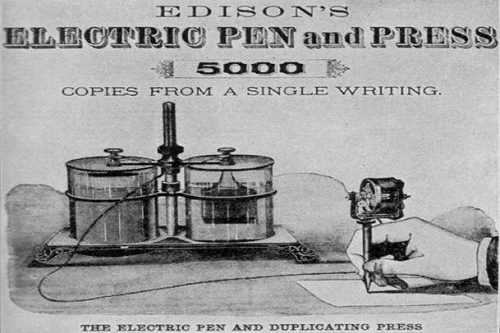SaaS businesses can be overwhelmingly complex. If the multi-tenant, cloud-based technology isn’t enough, there’s the recurring revenue model which creates all kinds of challenges from accounting to sales compensation to funding. Then, there’s the marketing. Getting noticed on the Internet gets harder every year and almost every SaaS product category has a crowded field of competitors. And of course there is mobile, which should come first right? In my own SaaS experience, be it scaling a sales and marketing team, consulting for SaaS startups or bootstrapping my agile marketing SaaS, Markodojo, I find myself returning to a common theme that always cuts through the complexity: SaaS customer alignment.
This is the second post in a series that explores the importance of aligning the goals and actions of the SaaS customer with the goals and actions of the SaaS business. The first post in a series introduced a simple framework for understanding SaaS customer alignment and its many benefits. This post digs deeper into the challenges of achieving SaaS customer alignment in the early stages of the purchase process. Along the way, we kick-off a list of tips to help SaaS businesses improve SaaS customer alignment at every stage of the SaaS customer lifecycle.
Not Everyone Needs Your Stuff
We love our SaaS companies and we love our SaaS products. They’re our babies! But, your baby always looks cuter to you than it does to everyone else. Selling to everyone is one of the biggest causes of poor SaaS customer alignment. Some people just don’t need your stuff, and they will never appreciate the unique qualities of your baby. Selling to everyone is an ill that inflicts many businesses, not just SaaS businesses, because it is baked into the economics. When growth is the primary determinant of SaaS company value, then there is always pressure to expand your available market. Unfortunately, your available market was probably determined a long time ago when your baby was conceived. Expanding your available market generally requires a new product module, a new SaaS product or even a new business unit.

SaaS customer acquisition should focus on maximizing available market penetration, not increasing available market size, and to do that you have to have a very clear picture of your target SaaS customers. Who truly needs your stuff? Why do they need it? What do they get out of it? How many are there? And, how can you reach them? This information goes by a lot of different names: market segments, qualification criteria, pain points, buyer personae, customer profiles, use cases, etc. The important realization is that they are all the same thing in the end: tools that reinforce SaaS customer alignment. The primary difference is in the depth of data; because you tend to have more of it the deeper the SaaS customer proceeds into the purchase process.
SaaS Customer Alignment Tip #1
Create a Common Customer Understanding
 Chances are your SaaS Marketing VP has some version of market segments, buyer personae, and lead scores, while your SaaS Sales VP has some version of qualifying criteria and pain points, and your SaaS Product VP has some version of users and use cases. Do they match? Are they shared? Do they use the same language? In the end, they define the same customer. Work as a team to create one definition of your SaaS customers, a shared understanding of who they are at a detailed level and a common language to describe them. Once you’ve defined each type of SaaS customer at a detailed level, then give each one a short, descriptive, meaningful name that can serve as a short hand for all the underlying detail.
Chances are your SaaS Marketing VP has some version of market segments, buyer personae, and lead scores, while your SaaS Sales VP has some version of qualifying criteria and pain points, and your SaaS Product VP has some version of users and use cases. Do they match? Are they shared? Do they use the same language? In the end, they define the same customer. Work as a team to create one definition of your SaaS customers, a shared understanding of who they are at a detailed level and a common language to describe them. Once you’ve defined each type of SaaS customer at a detailed level, then give each one a short, descriptive, meaningful name that can serve as a short hand for all the underlying detail.
SaaS Customer Alignment Tip #2
Learn to Say No
 Once you have a clear and common understanding of your ideal SaaS customers, you will find that you also have a clear and common understanding of your poor prospects. Qualify them out, early and often. When you’ve just raised that B-round and growth expectations are running high, it is easy to fall into the trap of over-selling your SaaS product. Bad prospects waste precious sales cycles and marketing dollars, driving up your customer acquisition costs. If you do manage to close them, they drive up your success and support costs, because your SaaS product is not a good fit for their needs. Ultimately, they cancel and drive up your churn rate. It’s better to say no up front, and make expanding your available market an element of your SaaS product strategy, not SaaS customer acquisition.
Once you have a clear and common understanding of your ideal SaaS customers, you will find that you also have a clear and common understanding of your poor prospects. Qualify them out, early and often. When you’ve just raised that B-round and growth expectations are running high, it is easy to fall into the trap of over-selling your SaaS product. Bad prospects waste precious sales cycles and marketing dollars, driving up your customer acquisition costs. If you do manage to close them, they drive up your success and support costs, because your SaaS product is not a good fit for their needs. Ultimately, they cancel and drive up your churn rate. It’s better to say no up front, and make expanding your available market an element of your SaaS product strategy, not SaaS customer acquisition.
Are You a Commodity or a Contraption?
One often overlooked item to include in your common customer understanding is the messaging you will use to communicate the value of your SaaS product to each SaaS customer type. That messaging should be consistent at the core in all of the places it might appear: website, sales pitches, email, direct mail, event presentations, press releases, blogs, webinars, and so on. However, poorly aligned messaging consistently applied produces consistently bad results.

Your SaaS product messaging must align with your SaaS customer’s understanding of your SaaS product. If your SaaS product is a commodity, keep the content simple. If your SaaS product is a contraption, you have to map out an educational journey.
Your SaaS product messaging must align with your SaaS customer’s understanding of your SaaS product. Are you a commodity or a contraption? A commodity is a product that is generic. Customers have seen it, used it and are completely familiar with it. It is virtually synonymous with the product category itself, like a Kleenex or a Coke. That is not a bad thing, if you own the category. In fact, that is a very good thing. A contraption is innovative, complex and poorly understood. Knowing where your SaaS product falls along this spectrum is essential to achieving SaaS customer alignment.
SaaS Customer Alignment Tip #3
Don’t get Caught Up in the Content
 Today’s SaaS marketers have a very broad communications toolkit that includes websites, email, blogs, ebooks, videos, ads, webinars, presentations, press releases and everything in between. It is easy to generate a lot of content. It is even easier to generate a lot of really meaningless content. If your SaaS product is a commodity, keep the content simple and focus it on getting the customer to the next stage: trial. They don’t need education.
Today’s SaaS marketers have a very broad communications toolkit that includes websites, email, blogs, ebooks, videos, ads, webinars, presentations, press releases and everything in between. It is easy to generate a lot of content. It is even easier to generate a lot of really meaningless content. If your SaaS product is a commodity, keep the content simple and focus it on getting the customer to the next stage: trial. They don’t need education.
If your SaaS product is a contraption, your SaaS marketing must be commensurately more sophisticated. In the end, you’d like to lead your SaaS customer to a commodity-ish understanding of your value, such as two words that say it all. It’s almost always a good thing to get your message down to two words, but contraptions can’t lead with that. As simple and clear as your two words might be, early stage prospects just won’t get it. You have to start with the level of interest and understanding of your target SaaS customer and map out an educational journey that brings their pains to the forefront, demonstrates your SaaS product’s value and ultimately leads to real understanding of your two words.
SaaS Customer Alignment Tip #4
Seeing is believing
 At the risk of repeating myself, I have yet to see a SaaS product that would not benefit from a free trial. That is, benefit SaaS customer alignment. While it is often difficult for the contraption to pull of a great free trial, even the commodity can run into difficulty if the adoption costs are high. For example, accounting software is a very well understood SaaS product category, but it is difficult to show the real value of the product until you have loaded it up with your SaaS customer’s chart of accounts, product SKUs, and so forth. I don’t care, and neither does your SaaS customer. Seeing is believing.
At the risk of repeating myself, I have yet to see a SaaS product that would not benefit from a free trial. That is, benefit SaaS customer alignment. While it is often difficult for the contraption to pull of a great free trial, even the commodity can run into difficulty if the adoption costs are high. For example, accounting software is a very well understood SaaS product category, but it is difficult to show the real value of the product until you have loaded it up with your SaaS customer’s chart of accounts, product SKUs, and so forth. I don’t care, and neither does your SaaS customer. Seeing is believing.
Find a way to demonstrate the value of your SaaS product in a real-world customer experience. The ideal scenario is that the customer signs up and is instantly gratified by the first thing she does with your SaaS product. Every SaaS business should strive for that ideal. If you are a bit of a contraption, then you need to help them out along the way with in-product ques and education. If you are a large complex, enterprise, transaction-oriented system with no hope of delivering a live system pre-purchase, then set up a production environment that your qualified prospects can test drive. Let them see it. If your product is good, they will buy it. And, even if it has some rough edges, they won’t be surprised later on. You will be more aligned with your SaaS customer.
The Cloudy Nature of SaaS Pricing
SaaS pricing is one of the most important dimensions of SaaS customer alignment. SaaS pricing isn’t that hard to do. It’s just hard to know if you are doing it right. Many SaaS businesses just give up and copy Salesforce.com or some other category leader similar to them. SaaS pricing is difficult for two reasons. First, pricing is inextricably linked to volume, and most SaaS businesses don’t have that much volume to work with. Second, SaaS pricing recurs renewal after renewal. To test SaaS pricing, you need lots of purchases. And, you need to be able to separate those purchases in a scientific A/B testing sort of way. Unfortunately, most SaaS customers don’t make good test subjects.

The difficulty of getting real data when it comes to such an important decision as your SaaS pricing model significantly ups the ante on the quality of your SaaS pricing judgment. You need to make the best SaaS pricing decisions your can, because you will be stuck with the results. The average SaaS business might change its SaaS pricing model every couple of years. The SaaS pricing learning curve is very slow. You must try to get it right the first time.
SaaS Customer Alignment Tip #5
SaaS Pricing Should be Simple
 There is a natural tendency to over-complicate SaaS pricing. Don’t. Your SaaS product might be overflowing with features, but your SaaS customers probably only come in a couple of flavors. Your SaaS pricing choices should say more about your customers, than they do about your features. Moreover, you’re just fooling yourself. You don’t know if one low-level feature is more important than the next. You can’t test it. So, why make it complicated?? Keep it simple and create bundles based on your SaaS customers and their list of needs, not your SaaS product and your list of features. If you started with SaaS Customer Alignment Tip #1, you will be in a very good position to do so.
There is a natural tendency to over-complicate SaaS pricing. Don’t. Your SaaS product might be overflowing with features, but your SaaS customers probably only come in a couple of flavors. Your SaaS pricing choices should say more about your customers, than they do about your features. Moreover, you’re just fooling yourself. You don’t know if one low-level feature is more important than the next. You can’t test it. So, why make it complicated?? Keep it simple and create bundles based on your SaaS customers and their list of needs, not your SaaS product and your list of features. If you started with SaaS Customer Alignment Tip #1, you will be in a very good position to do so.
SaaS Customer Alignment Tip #6
Build Upsell in from the Start
A good SaaS pricing model separates your SaaS customers based on their choices and maximizes both your revenue and their value. Customers that value capability A, pay a little more for A, but not so much more that they don’t benefit or don’t buy it. Economics 101. What you generally don’t cover in Economics 101 is the SaaS customer that sticks around year after year. SaaS customers evolve as their businesses grow and their use of your SaaS product deepens. This evolution demands that you stay aligned with your SaaS customer over time. From a SaaS pricing perspective, it offers the opportunity to create time-based bundles and usage-based pricing that reflect the natural evolution of your SaaS customers and build upsell into your SaaS pricing model from the start.
Stay tuned for the next article in this series: Aligning SaaS Customer Success!

This was an really insightful article. Even though SaaS is in the midst of a massive growth cycle, the challenge comes for the sales teams when the field becomes increasingly crowded. The key to building a successful sales strategy will be to keep things simple. Just like you said, instead of overwhelming yourself with all the marketing content available and try to go after every market, determine if the product is the right fit for the customer. Then one will be able to simplify the sales process while also making it more efficient. I am an avid follower of all you write. Thanks for always providing such a wealth of information and insight!! -Neal Goyal